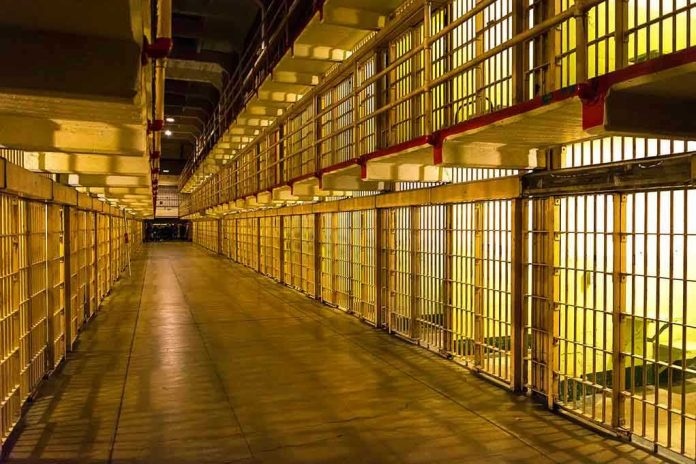
Oklahoma’s governor delivered a last-second reprieve to a death row inmate just moments before his scheduled lethal injection, highlighting the ongoing controversy surrounding a state execution system plagued by botched procedures and constitutional concerns.
Story Highlights
- Governor intervened at 11:02 AM on November 13, 2025, halting execution moments before lethal injection
- Oklahoma has one of the nation’s highest per capita execution rates despite troubled execution history
- State suspended executions in 2015 after series of botched lethal injections, raising constitutional questions
- Decision reignites debate over death penalty protocols and executive clemency powers
Governor Exercises Executive Authority in Final Moments
Oklahoma Governor exercised executive clemency powers on November 13, 2025, at 11:02 AM, sparing the life of a death row inmate just moments before his scheduled lethal injection at Oklahoma State Penitentiary in McAlester.
The dramatic intervention occurred as execution preparations were already underway, representing a rare use of gubernatorial authority to halt capital punishment at the final hour. The governor’s office released an official statement confirming the clemency decision.
Oklahoma’s Troubled Execution History Raises Constitutional Concerns
Oklahoma maintains one of the nation’s highest per capita execution rates, but the state’s death penalty system has faced significant scrutiny due to repeated procedural failures.
The state temporarily suspended all executions in 2015 following a series of botched lethal injections that raised serious constitutional questions about cruel and unusual punishment.
These execution failures highlighted systemic problems within Oklahoma’s Department of Corrections and prompted calls for enhanced oversight of capital punishment protocols.
Legal defense teams and advocacy groups, including organizations like the ACLU, mounted intensive clemency campaigns in the days leading up to the scheduled execution.
Their efforts focused on concerns about trial fairness and the inmate’s culpability, while victim’s families sought closure through the execution process. The competing interests created significant pressure on the governor to make a final determination on clemency.
Clemency Decision Reflects Broader Death Penalty Debates
The governor’s intervention demonstrates the critical role executive oversight plays in capital punishment cases, particularly when systemic concerns exist about execution protocols.
Legal scholars note that last-minute clemency decisions typically occur only when significant doubts emerge about evidence or procedural fairness.
This case underscores ongoing national debates about the death penalty’s implementation and the importance of constitutional protections even in capital cases.
The decision carries both short-term and long-term implications for Oklahoma’s criminal justice system.
While the immediate result spared the inmate’s life and provided relief to supporters, the case may influence future clemency decisions and prompt policy reviews of the state’s execution procedures.
The intervention also highlights the delicate balance between justice for victims and ensuring constitutional protections remain intact throughout the capital punishment process.
Sources:
Oklahoma governor spares life of death row inmate just before scheduled lethal injection







